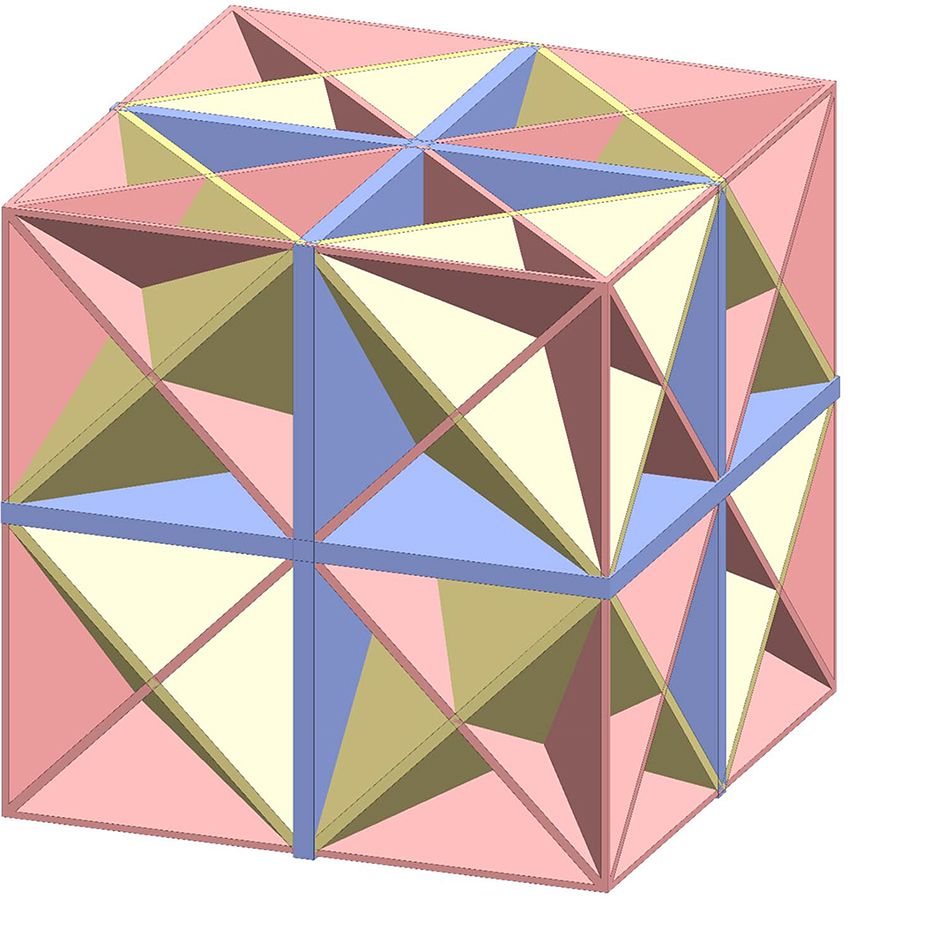
This structure is one of the stiffest ever. (Source: Tancogne-Dejean T et al. Advanced Materials 2018)
A characteristic feature of the design is that the stiffness in the material’s interior is achieved through plate-lattices rather than trusses.
“The truss principle is very old; it has long been used for half-timbered houses, steel bridges and steel towers, such as the Eiffel Tower.
We can see through truss lattices, so they are often perceived as ideal lightweight structures,” says Professor Mohr. “However, using computer calculations, theory and experimental measurements, we have now established a new family of plate-lattice structures that are up to three times stiffer than truss-lattices of the same weight and volume” (See box.) And it is not just the stiffness (resistance to elastic deformation) of these structures that approaches theoretical maximum values: their strength (resistance to irreversible deformation) does, too.
The ETH researchers initially developed these lattices on the computer, calculating their properties in the process. Then they produced them at the micrometre scale from plastic through 3D printing. Mohr emphasises, however, that the advantages of this design are universally applicable – for all constituent materials and also on all length scales, from the very small (nanometre-sized) to the very large.